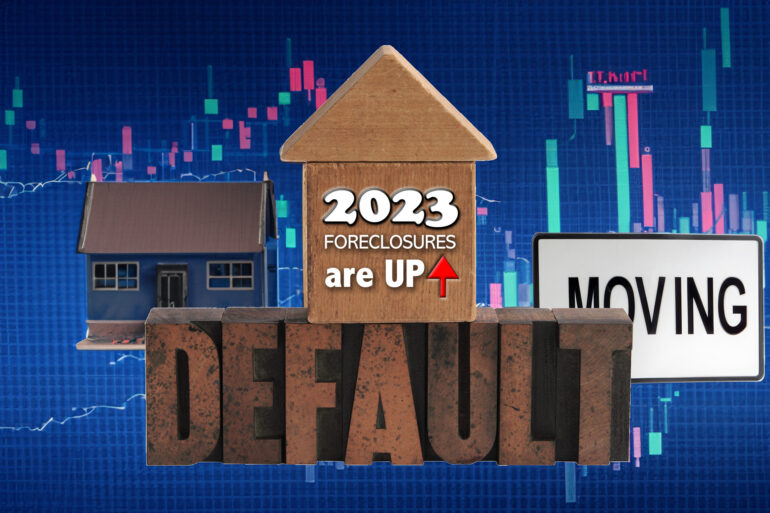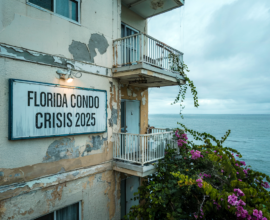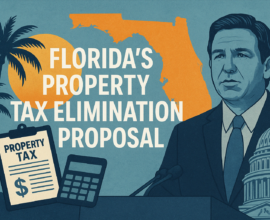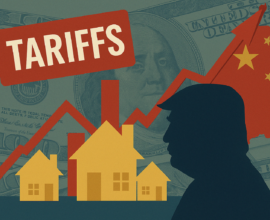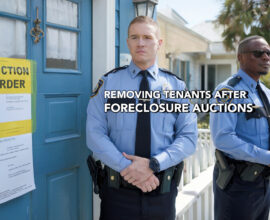2023 Foreclosures Are Up & Rising
Ever since hitting an all-time low in 2021, U.S. foreclosure rates have been on a steady rise. According to real estate data company ATTOM, there were 95,712 foreclosure filings in the first quarter of 2023, up 6% from the previous quarter and up 22% from last year. In March alone, there were 36,617 filings, up 20% from February and up 10% from last year. And as recently as May, foreclosure filings reached 35,196, up 7% from April and up 14% from last year.
Basically, foreclosures aren’t slowing down. If anything, they’re accelerating. But why? And in which markets are they occurring most? Read on to find out!
Interestingly, current foreclosure rates are highest in some of the same cities that saw the most home value appreciation during COVID-19 (aka pandemic boomtowns), including many in Florida.
What Are Foreclosures and Foreclosure Rates?
A foreclosure is the process by which a mortgage lender takes possession of a property if the homeowner fails to make their payments or otherwise breaks their mortgage agreement. Typically, lenders initiate the foreclosure process after the borrower fails to make payments for three consecutive months.
A foreclosure rate refers to the percentage of homes in an area that are in the foreclosure process. It’s a useful measure of the overall health of a real estate market. In 2023, the foreclosure rate for the entire U.S. was 0.23%. That’s relatively low by historical standards, but it’s still higher than the 0.16% in 2020 and the 0.11% in 2021.
Despite government efforts to lower foreclosure rates, they appear to be on an upward trajectory.
Which Markets Are Seeing the Highest Foreclosure Rates?
Interestingly, current foreclosure rates are highest in some of the same cities that saw the most home value appreciation during COVID-19 (aka pandemic boomtowns), including many in Florida.
Among cities with populations of at least 200,000, those with the highest foreclosure rates in May 2023 include Lakeland, FL (one in every 1,361 housing units with a foreclosure filing), Palm Bay, FL (one in every 1,647 housing units), and Ocala, FL (one in every 1,671 housing units). Across the state, one in every 2,470 housing units had a foreclosure filing.
Florida also had the highest number of foreclosure starts — the number of foreclosures actually initiated — in May (2,901). It was followed by California with 2,451, Texas with 2,286, Illinois with 1,358, and New York with 1,287.
But if you’re worried about a major housing crash like the one in 2008…don’t be.
Potential Causes of Rising Foreclosure Rates
Despite government efforts to lower foreclosure rates, they appear to be on an upward trajectory. Potential causes behind this include:
- The end of government moratoriums. When the COVID-19 pandemic hit, federal and many state governments enacted government moratoriums, which temporarily suspend foreclosure proceedings to help struggling homeowners. However, most of these ended in 2021, and now a backlog of foreclosures is being processed.
- The rising cost of living. The cost of living in the U.S. rose by 4% from May 2022 to May 2023. In Florida, it’s 1% higher than the national average, and housing is 4% higher. The result? Many homeowners are having a harder time affording their mortgages.
- High inflation. Though inflation rates have been cooling down recently, they’re still nearly double what they were before the pandemic and much higher than the Federal Reserve’s 2% target rate. To make matters worse, wages have barely kept up.
- An uptick in the unemployment rate. The unemployment rate in May was 3.7%, which is still very low relative to historical standards. However, it also saw its biggest monthly rise since 2020. This could be an early signal of trouble ahead.
- Other economic challenges. Many homeowners are struggling with additional challenges, such as higher interest rates and a volatile economy — all of which can hurt homeowners’ ability to keep up with their mortgage payments.
As a real estate investor, you can benefit from rising foreclosure rates despite the potential market downturn.
The Impact of Rising Foreclosure Rates on the Housing Market
An increase in foreclosure activity isn’t usually a good sign for the real estate market. It often communicates economic distress, which can cause depreciation. It also adds more housing supply to the market. And although the current market desperately needs more housing stock, this, too, puts downward pressure on home values.
That said, rising foreclosure rates may also motivate stricter lending practices. After all, banks don’t want to get stuck with foreclosed properties and be forced to become landlords. So, they may raise their lending standards to mitigate this risk, making it harder for some buyers to secure financing and lowering overall demand for housing.
But if you’re worried about a major housing crash like the one in 2008…don’t be. Homeowners now have more equity in their homes and are in better financial positions than homeowners were back then. Added to that, the percentage of mortgage payments that are paid late (aka delinquent mortgages) is still relatively low. In Q1 of 2023, it was 1.73%. That’s much lower than it was leading up to the 2008 recession, which is a good sign.
Granted, anything could happen. The fact that foreclosures are up is reason enough to stay vigilant. As ATTOM CEO Rob Barber stated, “This upward trajectory suggests the possibility of continued heightened activity, and with foreclosure completions seeing the largest monthly increase this year, we will continue to monitor the potential impacts this may have on the housing market.”
How Investors Can Benefit from Increased Foreclosure Activity
As a real estate investor, you can benefit from rising foreclosure rates despite the potential market downturn. For example, you can often buy foreclosure properties at a discount since banks tend to want to get rid of them quickly. These can make for great fix-and-flip or rental properties. Either way, you can make a substantial profit.
Alternatively, you can find properties headed toward foreclosure (aka pre-foreclosure). The distressed homeowners of such properties may be willing to sell their houses to you at below-market value to avoid foreclosure (and ruining their credit as a consequence).
To find your next foreclosure deal, explore PropertyOnion.com’s property search map. It lists countless Florida foreclosure and tax deed properties so that you don’t have to scour public records. Sign up for a free account today to take your real estate investing to the next level!
